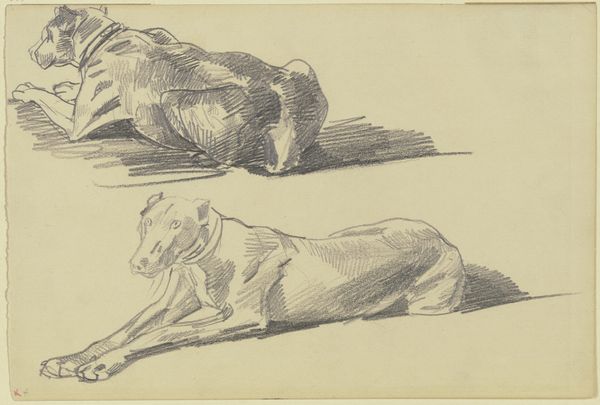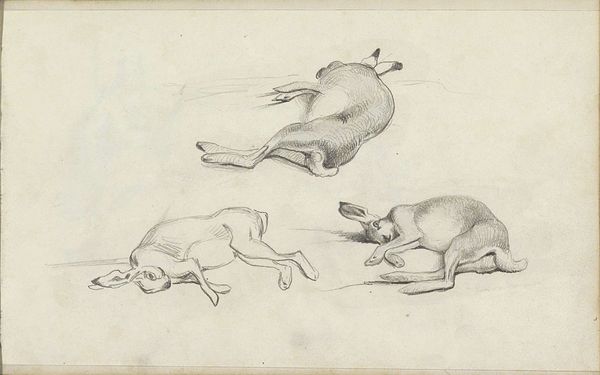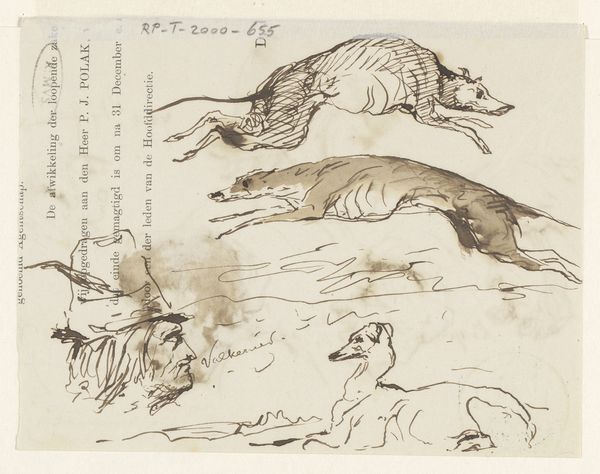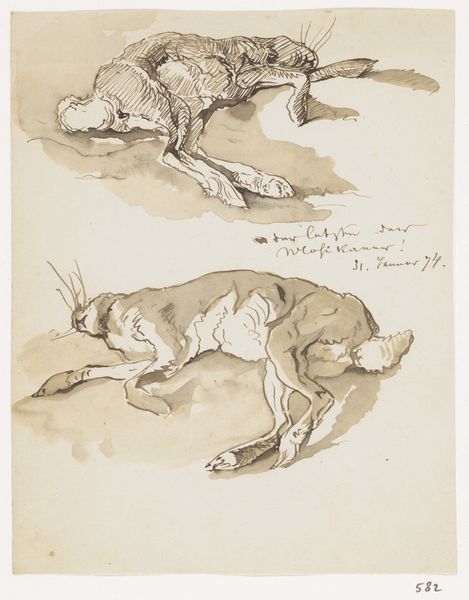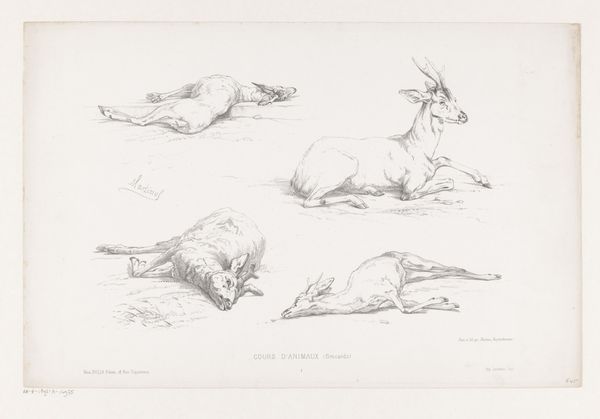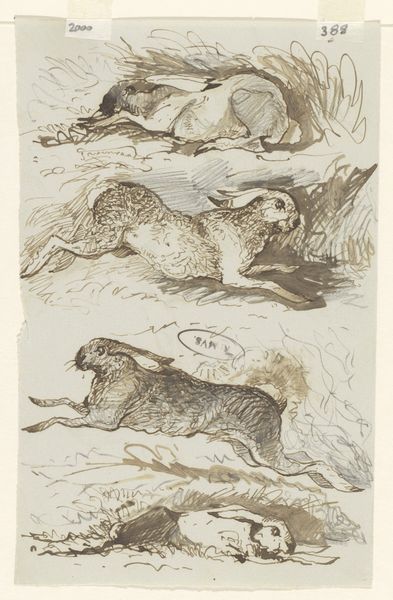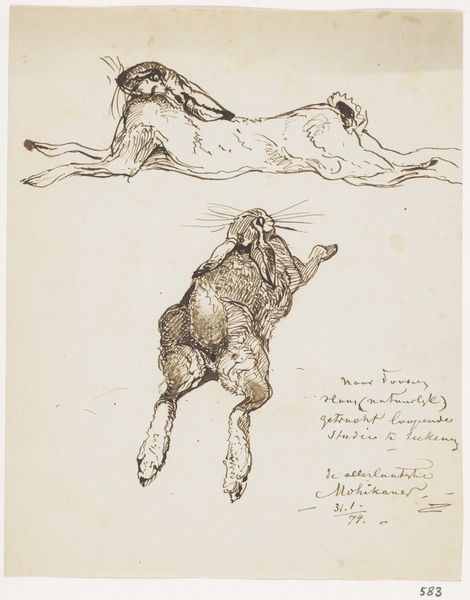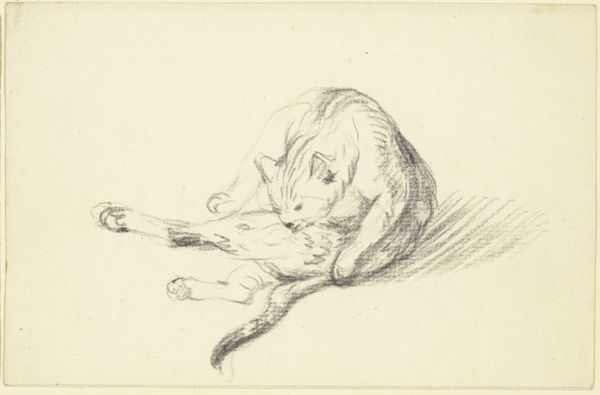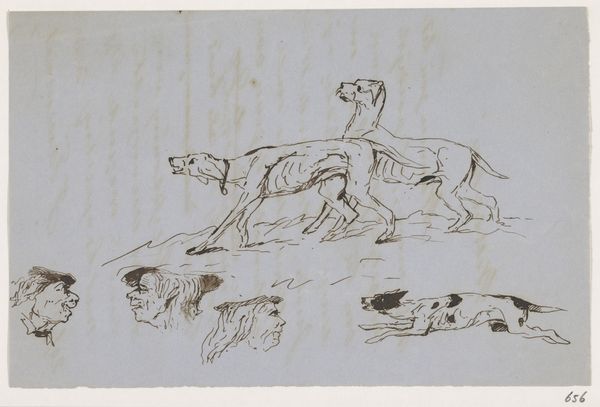
drawing, paper, ink
#
drawing
#
imaginative character sketch
#
quirky sketch
#
pen sketch
#
landscape
#
paper
#
personal sketchbook
#
ink
#
ink drawing experimentation
#
line
#
sketchbook drawing
#
watercolour illustration
#
storyboard and sketchbook work
#
sketchbook art
#
fantasy sketch
#
realism
Dimensions: height 105 mm, width 137 mm
Copyright: Rijks Museum: Open Domain
Curator: Here we have Johannes Tavenraat's "Haas," an ink drawing on paper created around 1868, currently held in the Rijksmuseum's collection. Editor: The vitality leaps right off the page, doesn't it? The dynamism created through line work is quite remarkable; it captures pure movement. Curator: Indeed. Note the economy of line, almost calligraphic. The contour and interior lines serve not just to define shape but to suggest form and texture, an exquisite interplay between representation and abstraction. It begs us to examine what these depictions convey on a symbolic level. Editor: Speaking of representation, consider the material realities here. Paper was a valuable commodity. The act of choosing to depict such quotidian creatures, these hares, instead of aristocratic portraits, reveals a democratization of subject matter. What kind of patronage did Tavenraat enjoy that allowed for such explorations of common subjects? Curator: That's a fascinating entry point to understanding the socio-economic context. However, consider the inherent structure of the drawing. The deliberate placement of the hares, one above the other, creates a visual rhythm. One might interpret the positioning to imply a hierarchy, mirroring society itself or perhaps a visual metaphor for freedom and captivity. Editor: I think focusing on the social aspect of making and selecting raw materials helps contextualize Tavenraat's choices, adding another layer to the artwork itself. Looking closely, the laid paper suggests its origins. Each component and decision points to an interaction within its environment. Curator: Ultimately, this work, rendered in ink and line, represents much more than simple animals bounding across a page; it signifies formal mastery. Editor: Yes, the way materiality impacts production opens new avenues to understanding the subject, form and social history.
Comments
No comments
Be the first to comment and join the conversation on the ultimate creative platform.
